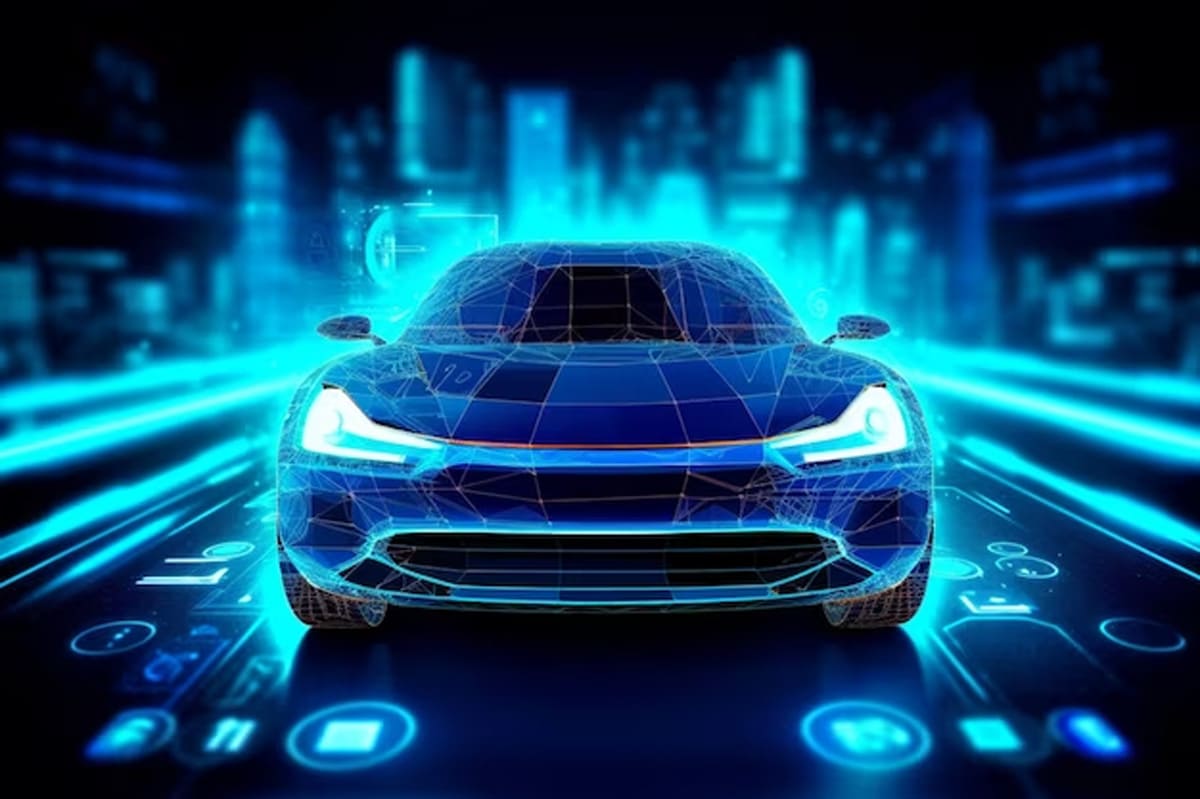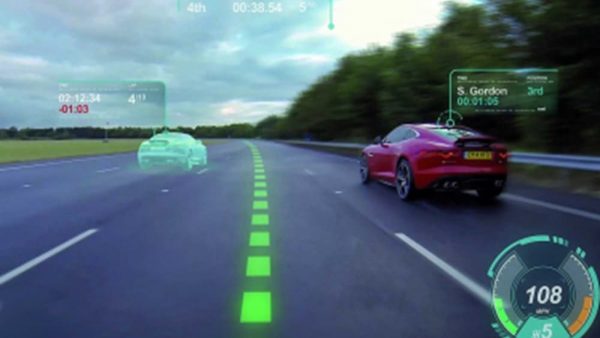The arena of auto racing stands as a testament to the relentless pursuit of technological excellence, where each era surpasses the last in speed, safety, and engagement. This exploration delves into the exhilarating future of auto racing, highlighting the innovative technologies and emerging trends poised to redefine this high-octane sport.
Electric Racing: Charging Towards a Sustainable Future
One of the most transformative trends in auto racing is the shift to electric power. The Formula E series, a trailblazer in all-electric racing, is rapidly gaining momentum and capturing the attention of major automotive players. This shift is not merely about speed; it’s a statement on sustainability. Formula E stands at the vanguard of eco-conscious motorsports, and with ongoing advancements in battery technology, it’s set to redefine the competitive landscape. Electric racing promises a future where high-speed thrills and environmental responsibility coexist seamlessly.
Autonomous Racing: Steering into the Future
Autonomous racing, once relegated to the realms of science fiction, is fast becoming an awe-inspiring reality. Innovations in this field are led by groundbreaking series like Roborace, which features driverless electric vehicles. These technological marvels, equipped with state-of-the-art sensors, AI, and machine learning algorithms, navigate race tracks autonomously at breathtaking speeds. More than a spectacle, autonomous racing serves as a proving ground for technologies with far-reaching implications, extending well beyond the race track and into everyday automotive use.
The Connectivity Revolution: Data-Driven Racing
In the near future, connectivity will revolutionize the auto racing experience. Race cars will be laden with sensors and cameras, transmitting a treasure trove of real-time data to both teams and audiences. This evolution promises a more immersive spectator experience, offering insights into the intricacies of racing through live telemetry, on-board camera feeds, and real-time biometric data from drivers. For racing teams, this real-time data stream is a goldmine, informing crucial decisions about vehicle dynamics, strategy, and performance optimization.
3D Printing: Reshaping the Fabric of Auto Racing
3D printing technology is set to dramatically alter the landscape of auto racing design and manufacturing. By enabling the creation of customized, lightweight components, teams can significantly enhance aerodynamics and reduce vehicle weight. The rapid prototyping capabilities afforded by 3D printing allow for an unprecedented level of experimentation and innovation in design, enabling teams to quickly adapt and evolve their vehicles. As this technology continues to advance, its role in developing new, creative solutions for race car construction will become increasingly prominent, marking a new chapter in the engineering and aesthetics of auto racing.
Revolutionizing Racecar Construction: The Advent of Next-Gen Materials
The arena of auto racing is witnessing a paradigm shift in material science. The once-revolutionary carbon fiber, known for its fusion of lightness and strength, is now just the baseline. The horizon is brightened by materials like graphene, which promise not just marginal improvements but a transformative leap in reducing weight and enhancing performance. This advancement in materials science isn’t merely about escalating velocity; it’s fundamentally redefining safety standards in racing vehicles.
Mastering the Air: Next-Level Aerodynamic Innovations and Techniques
The art and science of aerodynamics have long dictated the success of race cars. In the upcoming era, we anticipate a synergy of state-of-the-art computer modeling and enhanced wind tunnel experiments to revolutionize race car designs. The aim is ambitious: achieving the delicate balance between reducing drag and increasing downforce, without compromising stability. The integration of cutting-edge computational fluid dynamics (CFD) combined with the prowess of artificial intelligence (AI) is set to usher in a new age of aerodynamic sophistication.
Energy Recovery Systems: Pioneering the Future of Racing Efficiency
The incorporation of Energy Recovery Systems (ERS) in top-tier racing series like Formula 1 symbolizes a significant leap in automotive technology. These systems, ingenious in harvesting energy during braking to boost acceleration, are a cornerstone of modern racing. As technology advances, we can anticipate ERS to evolve into more potent, seamlessly integrated components, fundamentally altering racing car dynamics.
Redefining Fan Engagement: The Fusion of AR and VR in Racing
The fusion of augmented (AR) and virtual realities (VR) is transforming the auto racing spectator experience. AR brings a new dimension to race watching, overlaying live data in broadcasts, thus enriching the spectator’s insight and engagement. VR offers an unparalleled immersive experience, allowing enthusiasts to virtually inhabit the racer’s seat. This technological evolution is poised to continually redefine the way fans interact with and immerse themselves in the world of auto racing.
Enhancing Safety: Innovative Technologies Reshaping Racer Protection
As auto racing relentlessly pursues higher speeds and superior performance, safety remains its unwavering focus. Recent advancements in material science contribute to creating more resilient vehicles, complemented by groundbreaking safety technologies like the HANS device and halo cockpit protection. The future promises further advancements, focusing on sophisticated energy absorption systems and enhanced safety restraints, elevating the safety paradigm in racing to new heights.
The Green Flag for Eco-Friendly Racing: Sustainable Practices in Motorsports
The shift towards sustainability in auto racing is more than a trend; it’s a commitment to environmental stewardship. Initiatives such as Formula 1’s “Net Zero Carbon” goal and the exploration of alternative, eco-friendly energy sources signify a new, responsible era in motorsports. The future envisions a more sustainable approach to racing, encompassing everything from biofuel utilization to comprehensive recycling programs at race events, heralding a new, greener chapter in auto racing history.
Innovative Fan Engagement in Modern Motorsports
The fan engagement paradigm in motorsports is undergoing a seismic shift. The rise of digital platforms, including social media and online streaming, coupled with interactive fan experiences, is leading this transformation. Today’s fans are not mere onlookers; they are integral participants shaping the sport’s narrative. Social media channels have emerged as direct conduits for fan-team-driver interactions, fostering a sense of community and involvement. Virtual motorsport experiences and live, interactive race-day inputs offer fans a chance to influence race outcomes, marking a significant departure from traditional spectatorship. This evolving trend heralds a long-term movement towards a deeper, more engaging motorsport experience.
Global Expansion: Broadening Motorsports’ International Footprint
Motorsports, traditionally a global phenomenon, is poised for further international expansion. Integrating new circuits in emerging markets such as Asia and the Middle East is reshaping the racing calendar. This expansion transcends geographical boundaries, introducing the sport to novel audiences while offering fresh challenges and prospects for competitors. The foray into these new markets is a strategic endeavor to captivate diverse fanbases, enhancing the sport’s worldwide allure. This global outreach is an avenue for exploring innovative racing strategies and embracing the cultural diversity these regions offer to motorsports.
Epilogue: The Future Trajectory of Motorsports – An Intersection of Innovation and Advancement
Looking ahead, the landscape of motorsports is a thrilling amalgamation of cutting-edge innovation and technological advancements. The sector is rapidly evolving, unveiling previously unimagined possibilities. The advent of electric and autonomous vehicles, the development of sophisticated materials, and a transformative approach to fan interaction are just the beginning. Motorsports has consistently been at the vanguard of pushing technological limits. As technological progress marches on, motorsports stand as a pivotal force driving innovation, influencing not just the automotive arena but spearheading technological evolution on a global scale. For enthusiasts and tech aficionados alike, the future of motorsports is a compelling narrative of continuous innovation and inspiration, promising to remain a trendsetter in technological advancements and a source of worldwide captivation.





